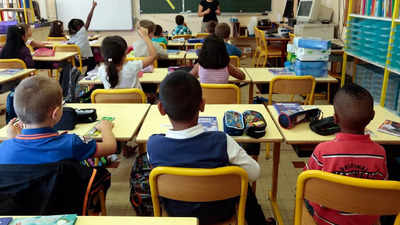
A new poll found that Americans overwhelmingly support federal school choice measures. According to the Centre Square Voters’ Voice Poll conducted by Noble Predictive Insights, more than two-thirds of the 2,200 likely voters polled support a federal tax credit program that would allow families to use public funds to send their children to a school of their choice, including private institutions, according to local US media reports.
This reflects a growing trend of support for school choice across the nation.The American Federation for Children (AFC) also confirmed these findings in its own survey, which found that 68% of voters favor school choice, according to a Fordham Institute report.
The high level of support, particularly among Latinos (75%) and African Americans (72%), along with Republicans (84%) and a strong showing from Millennials (75%), demonstrates the broad appeal of the concept. This article explores what school choice means, how federal school choice programs work, and the potential benefits and drawbacks of such policies.
How is the US schooling system structured?
The traditional US education system primarily functions on the premise of public schools funded by local property taxes, where children attend schools based on their residential areas. While the vast majority of students still attend their local public schools, there are various other educational options available. These include public charter schools, magnet schools, private and parochial schools, online learning, and homeschooling.
School choice aims to expand these alternatives by allowing parents to use public funds to enroll their children in schools other than their assigned local public schools, giving them greater flexibility in choosing an educational path that suits their child’s needs.
What is School Choice?
School choice refers to a set of policies and programs that give families the ability to choose their children’s educational setting using public funding. This can include sending children to private schools, public charter schools, or out-of-district public schools. At the heart of the school choice debate is the idea of providing parents more freedom to choose where and how their children are educated, especially for those who are dissatisfied with their local public schools.
Programs under school choice often allow public funding to “follow the child,” meaning that the education dollars allocated for a child can be directed toward alternative education options whether private, religious, or charter schools, instead of being tied exclusively to public institutions.
Federal School Choice Programs: How they work
A federal school choice program would allow tax dollars that are earmarked for a child’s education to be used toward tuition or related costs at private schools or non-traditional public schools, such as charter schools. These programs are implemented through various mechanisms:
Vouchers: Government-funded vouchers allow parents to use public education funds for private school tuition. Voucher programs often prioritize low-income families, helping them afford private education that would otherwise be inaccessible.
Education Savings Accounts (ESAs): These accounts provide parents with a set amount of public money that they can spend on a range of educational expenses, not just private school tuition. ESAs can be used for online learning programs, tutoring, or even homeschooling materials, offering more flexibility than traditional vouchers.
Tax-credit scholarships: These programs offer tax credits to individuals or corporations who donate to nonprofit organizations that fund private school scholarships for low- to middle-income families.
Federal school choice initiatives aim to level the playing field, enabling families from diverse socioeconomic backgrounds to access high-quality education, regardless of where they live.
What are the potential advantages of the Federal School Choice Program?
Increased parental control and customization: One of the biggest advantages of school choice is that it empowers parents to choose schools that best fit their child’s unique needs. Whether a child thrives in a smaller classroom setting, requires special education resources, or would benefit from a religious education, school choice offers families the flexibility to find the right fit.
Competition drives improvement: Advocates argue that school choice forces public schools to improve. By allowing parents to send their children elsewhere, schools are incentivized to offer better programs and higher-quality education to retain students. The competition generated between public and private schools can lead to innovation and accountability across the education sector.
Equal opportunity for low-income families: School choice programs can provide low-income families with opportunities they may not have otherwise. Vouchers and scholarships allow students from disadvantaged backgrounds to attend better-performing private or charter schools, offering a path to a higher-quality education that is not determined by zip code.
What are the cons of the federal school choice program?
From lack of accountability to concerns of discrimination, here are three major disadvantages that the federal school choice program can pose:
Diverts funds from public schools: A key argument against school choice is that it diverts much-needed funding away from public schools. Opponents argue that public schools, especially in low-income areas, already face significant challenges, and reducing their funding by shifting students (and their associated tax dollars) to private institutions could worsen the quality of public education.
Lack of accountability and oversight: Unlike public schools, which are held to strict standards and regulations, private schools have far less oversight, particularly in the way they allocate funds and manage educational outcomes. Critics argue that without sufficient regulations, there is little guarantee that private schools accepting public funds are delivering quality education, and they may not be as inclusive in their admissions practices.
Exclusion and discrimination concerns: Some school choice programs, especially voucher programs, allow private schools to reject students based on factors such as disability, religion, or sexual orientation. Critics, like Jessica Levin from the Public Funds Public Schools initiative, argue that this undermines equity, as public schools are required to accept all students, whereas private schools can select which students they wish to enroll.


